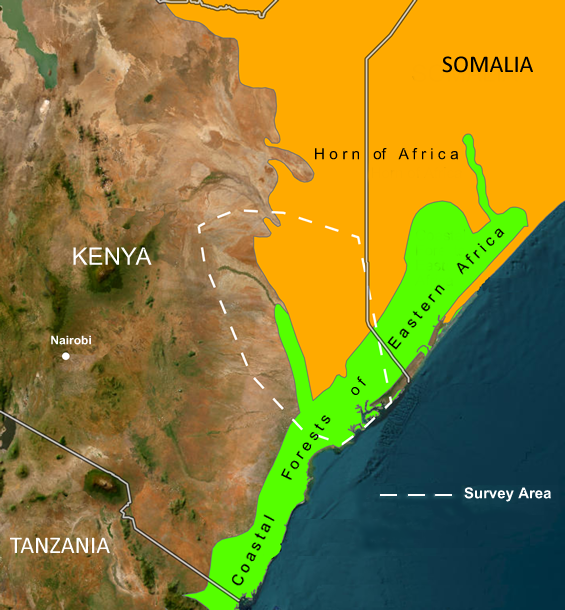|
|
|
|
|||||||||||||||||||||||||||
| The Conservancy's project is located in a biodiversity hotspot convergence zone—where the coastal forests of Eastern Africa and Horn of Africa meet. Much of that area is comprised of Somali Acacia-Commiphora bushlands and thickets. The coastal forests of Eastern Africa hotspot (shown in green below) extends from the Kenya-Somalia border to the Tanzania-Mozambique border and includes portions of the Tana River. These forests have over 1,700 threatened endemic animals and plants. Besides the endangered African wild dog, wildlife species include the critically endangered hirola,Tana River red colobus, and Tana River mangabey, and the vulnerable Aders' duiker are also under extreme pressure. Coastal and other forests are shrinking as land is used by subsistence agriculture, settlement, and infrastructure. All these factors contribute to an increase in human-wildlife conflict. The Horn of Africa hotspot (shown in orange below) covers more than 1.5 million km² and is one of only two that is entirely arid. The bushlands of northeastern Kenya are found here. This hotspot has over 2,700 endemic plants and animals, including threatened antelopes and more reptiles than anywhere in Africa. Only about 5% of the original habitat remains. Livestock grazing is a major cause of these losses, followed by charcoal harvesting and political instability. | |||||||||||||||||||||||||||
 | |||||||||||||||||||||||||||